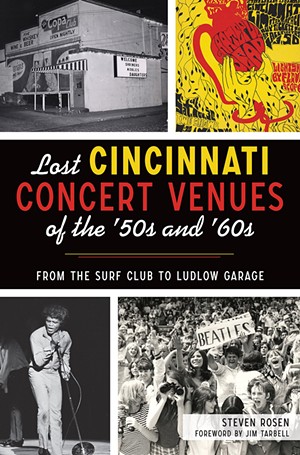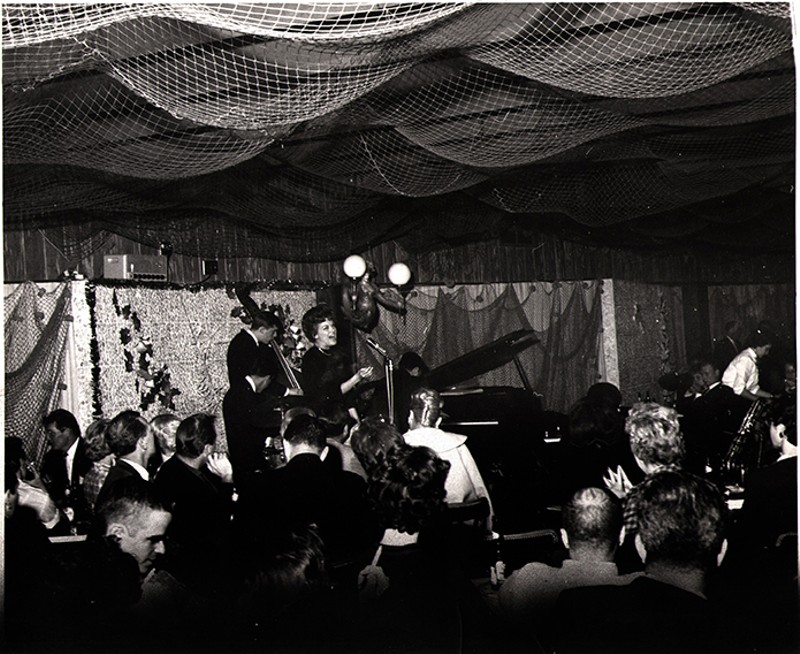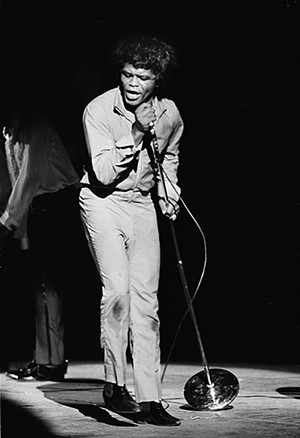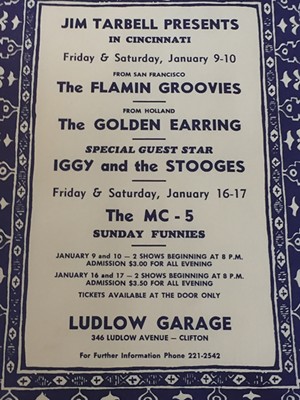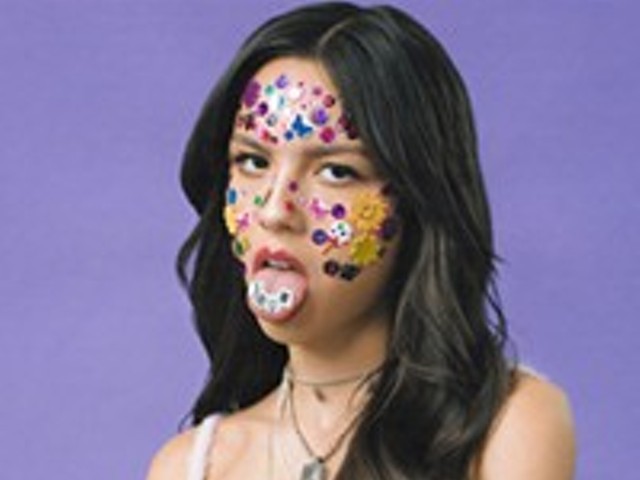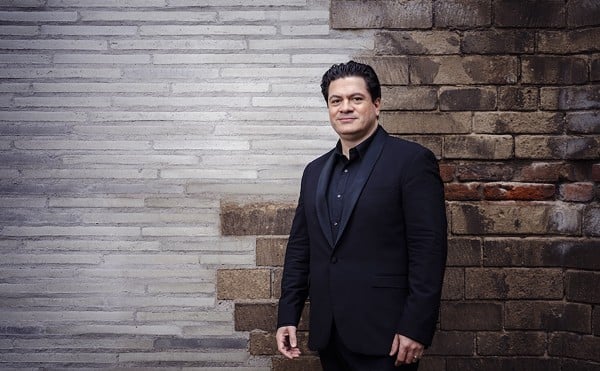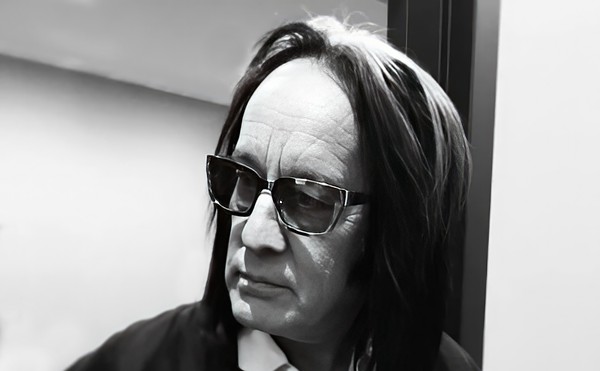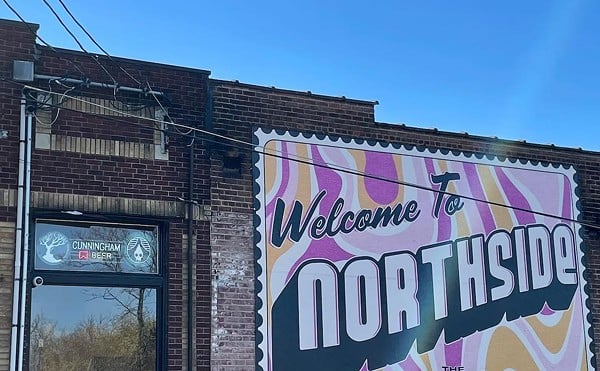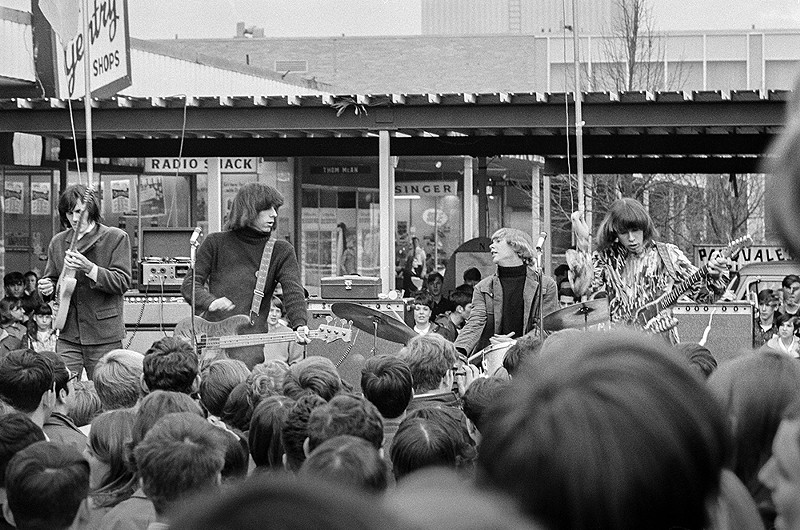
Picture this: It’s 1968, and an up-and-coming Grateful Dead is making a stop in Cincinnati on its first real tour. That on its own would be a significant event, but what makes this particular gig even more special is its unusual location: the Hyde Park-Mount Lookout teen center, a small converted church on Erie Avenue. Against all odds, a West Coast band known for its countercultural appeal and association with hallucinogenic drugs is playing in Cincinnati’s quiet suburbs before much of the country would get the chance to see it in person — and the band is doing it in a house of worship.
Cincinnati made history, in a sense. That event was nothing less than a culture shock for an area with manicured lawns and wholesome activities. Teenagers were building their own makeshift lightshows to be used in the venue, local press was abuzz about the Dead’s pioneering Psychedelic sound and parents were quickly forced to become aware of LSD evangelists like Wavy Gravy and Ken Kesey.
This is just one evocative moment featured in Lost Cincinnati Concert Venues of the ‘50s and ‘60s, a new book by prolific music journalist and former CityBeat Arts & Culture Editor Steve Rosen. Narrowing his focus on two decades that saw Jazz undergo an experimental renaissance while Rock & Roll rose to cultural dominance, Rosen’s book shows how a handful of now-defunct venues and local grassroots movements helped some of the most exciting figures in popular music make their mark on the Queen City.
Rosen was born at the very start of this two-decade era, coming of age alongside Rock music itself. As the book’s foreword by former vice mayor and the Ludlow Garage venue founder Jim Tarbell says, Rosen frequented underground venues like the Black Dome before attending Indiana University in 1968, fostering an obsession with the nascent Progressive Rock scene making waves in the United States. Much of the book, however, covers the years before that, paying tribute to the establishments that hosted Jazz greats and the earliest wave of Rock stars.
“If you’re going to write a book like this and try to have something timely, it really starts with the ’50s,” Rosen tells CityBeat.
For example, Rosen’s history of the Cincinnati Gardens, which opened in 1949 and was demolished in 2018, spans the entire scope of the book, as its early days were a “golden age for Rock & Roll/R&B package shows,” Rosen says. The venue hosted now-legendary acts like Buddy Holly, The Chantels and Chuck Berry in their heyday.
At roughly the same time, on the other side of the river, Newport’s Copa Club was booking a who’s-who list of Black performers that have since been classified as iconic. Over the course of a single year, attendees saw Miles Davis, Sam Cooke, the Isley Brothers and a host of other talented entertainers.
Rosen’s dropping of names of that caliber passing through Cincinnati between 1957 and 1960 is impressive, but the stories of what came after — reconstructed from old newspaper articles as well as new interviews with those who were there — are what make his book such an immersive read.
“What’s lost are those shows, and, to some extent, those kinds of shows where the smaller emerging acts of that time were playing in places that seemed to be able to accommodate them,” he says. “Even people we think of as stars today — Santana, The Kinks, Procol Harum — there was a time they were playing at some of these midsize halls.”
Brushes with the Avant-Garde
Rosen was able to conduct much of his research through public libraries and a subscription to a database of digitized newspapers, searching for names of venues and sliding down online rabbit holes.
“It’s a funny thing, making all of these different connections,” Rosen says. “Let’s say I wanted to find out about The Beatles at Cincinnati Gardens and when that was first announced. When I look it up, there on the entertainment pages are all these different things — I mean, stories, photos, ads all related to other aspects of entertainment. There’s always a reference in one story that makes you curious — what are they talking about?”
In one particularly evocative article from 1964 cited by Rosen, a young couple wins an all-expenses-paid night on the town and proceeds to visit seven music venues in short succession. It’s a testament to the wealth of Jazz moving through Cincinnati in the early ’60s, when the city became an essential stop for touring acts.
The concert reviews of Dale Stevens, a Cincinnati Post journalist and Jazz radio DJ, may have been Rosen’s most valuable discovery. It seems as though each time a now-renowned musician visited a Cincinnati venue during the ’60s, Stevens covered the event, leaving pithy and prescient insight behind for future generations. According to Rosen’s preface, Stevens deserves “a statue” for his contributions to the development of Cincinnati’s entertainment scene, penning multiple stories per day about everything from live entertainment to films to food over the course of his 33-year career at the Post.
When saxophonist John Coltrane played Babe Baker’s Jazz Corner in Avondale in 1963, Stevens responded to crowds confused by the quartet’s avant-garde sound by affectionately comparing their performance to a “three ring circus.” Tunes like the standard “My Favorite Things” would expand into epic feats of virtuosity under the band’s influence, stretching out to 20 minutes as each member got their chance to rattle off technical, sometimes abstract solos. It wasn’t Jazz meant to serve as a soundtrack to a relaxing dinner date — it was a challenge posed to the audience, and one they may not have enjoyed but wouldn’t forget.
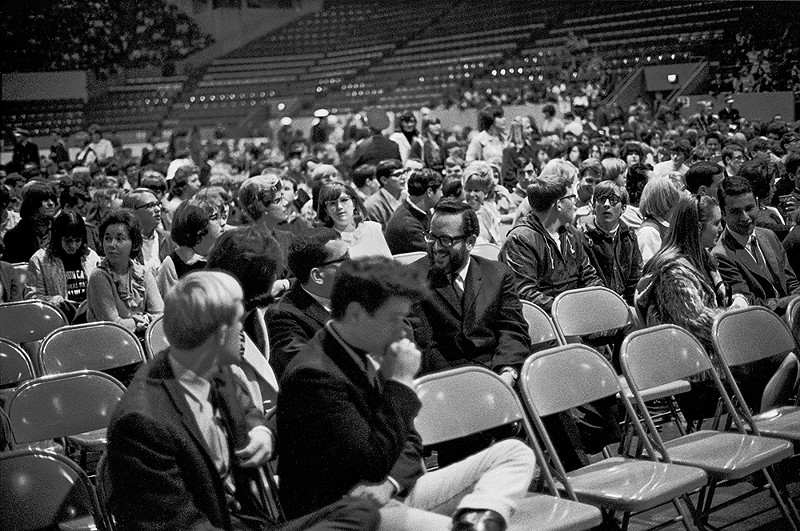
And when “sick” comic Lenny Bruce brought his controversial standup routine to the West Side’s Surf Club in ‘62, Stevens was there, too, returning with a review that now feels strangely contemporary.
“Lenny Bruce is both profane and profound,” Stevens says in the quoted review. “And if that seems a strange combination for a comedian, then don’t call him a comic. Call him an orator, or even a preacher. A doctor, maybe.”
Bruce was known for his shocking humor, which led to an obscenity conviction two years later, making it even more surprising that the gig took place in one of Cincinnati’s more traditionally conservative neighborhoods.
“How did he get there, what was he like and how was he received? That’s what you really want to know,” Rosen says. “It turns out this place, the Surf Club, booked a number of important artists for their first time in Cincinnati — the Smothers Brothers and Peter, Paul and Mary, for example. When you realize what kind of an impact those artists had, and you know that their legacies endure, it’s just so exciting to learn about what it was like so early on when people didn’t know what to expect.”
Counterculture in Cincinnati
Near the University of Cincinnati’s campus, the newly constructed Seven Cities Coffee House also introduced a spark of counterculture to the city in the early ’60s. In his book, Rosen depicts a charming, quirky spot that wouldn’t feel out of place in Clifton today. Each of the cafe’s alcoves was inspired by the decor and architecture of a major city like Madrid or Tokyo, with one even incorporating sand on the floor. It all combined with the scent of brewing coffee and sound of the era’s burgeoning Folk scene.
“(It) seems like a portal to the present day, when there’s at least one imaginatively designed, indie-spirited hip coffee house in every town,” Rosen writes in Lost Cincinnati Concert Venues of the ‘50s and ‘60s.
Of great importance was Seven Cities’ “Greenwich Village” stage, which helped launch the local Folk and Jazz scene for artists who frequented the venue. Drummer/vocalist Popeye Maupin, Psychedelic soul singer “Mad” Lydia Wood and pianist Danny Cox are just a few musicians who built a local following on the stage for an eclectic, left-leaning college crowd.
Perhaps the event that is the most incredible in retrospect, though, is the Grateful Dead’s two-day stop at the Hyde Park-Mount Lookout Teen Center in 1968.
“As part of the research, I spent a lot of time looking at websites devoted to these bands. The Dead certainly have a lot devoted to them, and even there are people seeking information about this show because it just seems odd,” Rosen says. “Even for that tour, which was just a swing through the Midwest, they were playing more typical clubs.”
The unlikely booking of what would become one of Rock’s most influential Jam bands was arranged by the teen center’s director, Jim Tarbell, who’d discovered the then-fledgling Dead on a summer vacation to San Francisco in search of Rock’s cutting edge.
Though the venue, located in the abandoned Episcopalian Church of the Redeemer, had hosted many members of Cincinnati’s local Progressive Rock scene as well as New York’s Vanilla Fudge, whose heavy Psych sound is often cited as a precursor to Heavy Metal, Tarbell wanted to tap into the West Coast’s wellspring of talent — and hippiedom — for a breakthrough gig.
“I needed to go to California because that’s where the real scene was,” Tarbell tells CityBeat.
Specifically, Tarbell was interested in the acts frequenting The Fillmore West, a now-legendary theater where bands like Jefferson Airplane and Janis Joplin’s Big Brother and the Holding Company got their starts. Though Tarbell didn’t get to see those acts in person while visiting, he couldn’t escape their influence or the Grateful Dead’s appeal.
“Everything I heard about (the Dead) said, ‘These guys are really interesting,’” Tarbell says. “So I called their management and asked if there was a chance they’d be able to play at the teen center.”
As luck would have it, the Grateful Dead was about to go on the road for the first time that fall. It was just $2,000 for Tarbell to book the show — a price he says would have increased dramatically had he contacted them a few months later.
“It was nuts,” Tarbell says. “The Grateful Dead had become so big by that time that people were really excited to be there — like they were a part of history. We had a light show, which was a first, because nobody was doing them at the time, except in San Francisco. It all contributed to the atmosphere of the venue.”
“The Grateful Dead in church,” Tarbell remembers wistfully. “It’s crazy — crazy good.”
The gig also was noteworthy for the Dead’s lineup, which featured keyboardists Tom Constanten and Ron “Pigpen” McKernan, with McKernan rejoining the band for the first time following his discharge from the U.S. Air Force.
Though the Grateful Dead arrived two hours late, the band jammed through the night, extending songs by more than 15 minutes in its now-famous improvisational style. A review in the teen section of the Enquirer recalled the event as being “lorded over by some huge communal over-soul.”
Though the Grateful Dead show was a success and became a mythical nugget of Cincinnati music lore, Tarbell’s eye for talent quickly outgrew the center. In 1969, he went on to open the short-lived but highly impactful Ludlow Garage, which launched that year with a performance by rockers Grand Funk Railroad and closed in 1971 after eccentric Experimental Rock group Captain Beefheart and His Magic Band took the stage (a new version of Ludlow Garage has been in place since 2015).
Rosen, then a college student, happened to be in attendance when Beefheart came to town.
“I just had this sort of image, this vision of them while they were playing,” Rosen says, remembering the way each band member contributed to the collective vibe. “I thought, ‘Oh my god, it’s like all these guys are connected by this really big rubber band.’ As each one played, it was pushing them into another. They were pinging and ponging off of each other. It was a weird sensation, but really cool music.”
A mural of Beefheart, painted by local artist Ellina Chetverikova, was installed in Clifton’s Gaslight district in late 2019, along with six other works commissioned in honor of the Ludlow Garage’s 50th anniversary. The range of performers depicted — including B.B. King, Judy Collins and Iggy Pop — exemplify Tarbell’s eclectic tastes.
As Tarbell did with the Grateful Dead concert at the Hyde Park-Mount Lookout teen center, his Ludlow Garage brought a taste of counterculture to an area that was otherwise less familiar with the scene.
“I would take people like The Allman Brothers Band into a neighborhood eatery run by an elderly couple, this place called the M&M Restaurant, kind of a burger joint,” Tarbell says. “I’ll never forget when I walked in with the band with all this long hair, and I heard Vivian, one of the waitresses, say ‘Oh my god, now what?’ But before it was all over, everybody had lunch, and it was all sunshine and lollipops. That’s kind of the way the scene played out in the neighborhood.”
Pop Music’s Legacy
Underground venue The Black Dome, which operated solely in 1969 at Vine Street and William Howard Taft Road, brought in seminal Boston Psych-Rock outfit Earth Opera, Progresesive Psych Rock band Procol Harum and heavily make-upped Hard Rock vocalist Alice Cooper.
“I remember going to the Black Dome during the summer of ’69, so I was home from school,” Rosen says. “I went with a friend, and it was already kind of late for a show, getting around 11 or so. I remember everybody being crowded in and standing. The place was kind of dark. It was a different energy from sitting in a big venue just watching someone. The opening act was Eli Radish. I thought, ‘Boy, that’s just a cool name.’ Although I don’t get it, it’s cool.”
The headliner that night happened to be James Gang, a Cleveland trio fronted by Joe Walsh, who would join The Eagles in 1975.
“It was just electrifying,” Rosen remembers. “They had these longer guitar solos, and they were really tight. It was exactly the kind of music that at that time was considered new.”
Rosen’s book concludes with a lost venue best known for hosting sports: Crosley Field. While The Beatles were the most famous band to perform at the former home of the Cincinnati Reds, the story of their rain-delayed 1966 show is tame compared to Crosley’s infamous 1970 Cincinnati Pop Festival.
The surprising “peanut butter incident” was the centerpiece of that memorable event. During the Stooges’ set, “Godfather of Punk” Iggy Pop went crowd surfing, procured a jar of peanut butter from a fan, smeared it all over himself and tossed globs into the audience. The festival also featured clashes between cops and dancing kids plus Alice Cooper’s attempt at hypnotizing the crowd, which was interrupted when a pineapple upside-down cake that was launched from the crowd hit Cooper in the face.
It’s a surreal snapshot of where Rock and Pop music were headed at the turn of the decade. Iggy Pop’s animalistic, stage-diving live presence and sound would foreshadow the rise of Punk, while Cooper’s theatrics would only intensify over the years, influencing future generations of carnivalesque Rock tours.
Though Rosen says “the world of popular music is even wider and broader than ever” these days, he believes it’s important to preserve the memory of venues that are no longer standing and to salute the variety of music they brought to the city. Venues like Ludlow Garage and Babe Baker’s Jazz Cafe may have been relatively short-lived, but they gave many Cincinnatians their first experiences with Pop music’s artistic vanguard.
Tour Some of Cincinnati’s Iconic Lost Venues
Cincinnati Gardens
Open: 1949-2016; demolished in 2018
Address: 2250 Seymour Ave.,
Bond Hill
Notable bookings: Buddy Holly and The Crickets, The Beatles,
The Rolling Stones
Babe Baker’s Jazz Corner
Open: 1958-Late 1960s
Address: 3128 Reading Road, Avondale
Notable bookings: John Coltrane, Lester Young, Cannonball Adderley
The Living Room
Open: 1961-1970
Address: Walnut Street, Downtown
Notable bookings: Ramsey Lewis Trio, Duke Ellington, Count Basie
Seven Cities Coffee House
Open: Early 1960s
Address: Calhoun and Dennis streets, Clifton
Notable bookings: Popeye Maupin, Danny Cox
Ludlow Garage
Open: 1969-1971
Address: 342 Ludlow Ave., Clifton
Notable bookings: The Allman Brothers, The Kinks, Santana
The Black Dome
Open: 1969
Address: 2506 Vine St., Clifton
Notable bookings: Alice Cooper, MC5, Earth Opera
Steven Rosen’s Lost Cincinnati Concert Venues of the ‘50s and ‘60s is available at local and online retailers and stevenrosen.net. Rosen will discuss and sign the book at 7 p.m. May 16, at Joseph-Beth Booksellers (2692 Madison Road, Norwood).
Stay connected with CityBeat. Subscribe to our newsletters, and follow us on Facebook, Instagram, Twitter, Google News, Apple News and Reddit.
Send CityBeat a news or story tip or submit a calendar event.

